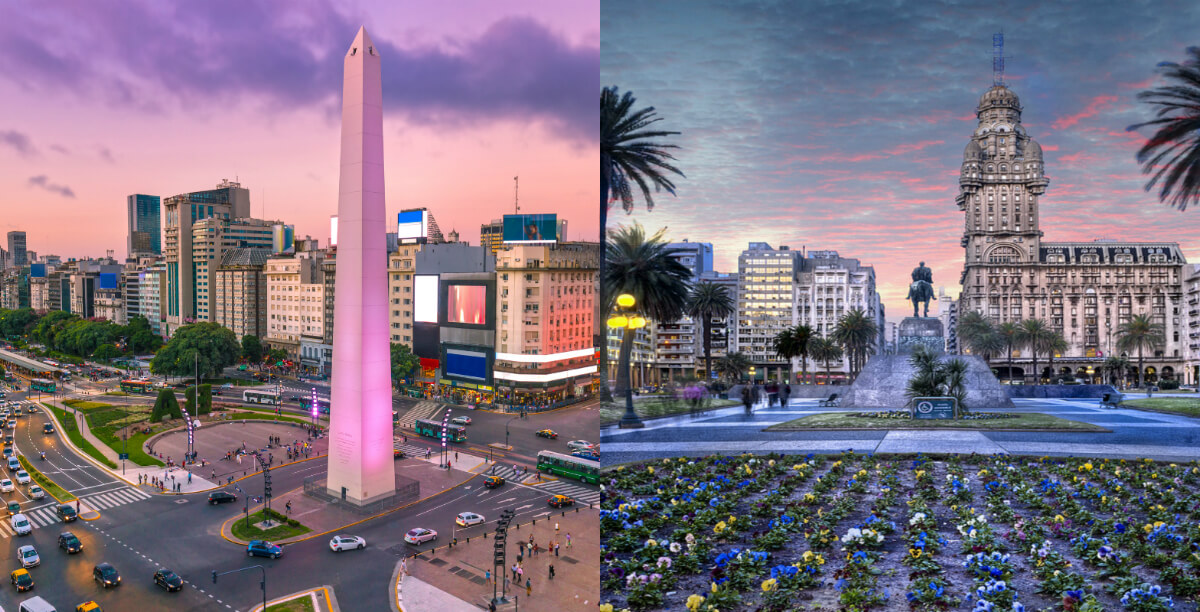RIO DE JANEIRO, BRAZIL – In the last two years, the number of Argentines who decided to move to Uruguay grew exponentially. Business people, entrepreneurs, and professionals who see better economic, legal, and even social conditions to continue with their activity in the neighboring country. But, which is better when comparing salaries and living costs in Montevideo and Buenos Aires?
In February, Randstad, the Human Resources services firm, carried out this survey to compare what it means to work and live in both capitals.
Historically, Uruguay has been an attractive place for Argentines who are considering the possibility of emigrating for work. The geographical proximity, the similarity of customs, the economic stability, the low unemployment rate, and a friendly immigration policy for Mercosur citizens, especially from Argentina, among other factors, play in favor.

Given this scenario, Randstad’s talent management experts have carried out a comparative analysis based on the average income in each country. In Argentina, the median gross remuneration in the formal private sector -according to the report “Situation and Evolution of Registered Labor of the Ministry of Labor, Employment and Social Security- is US$760 gross, while in Uruguay, according to Randstad’s estimates, this figure is US$995.
Likewise, each country sets the minimum remuneration by law. The minimum living and mobile wage in Argentina is US$300, while on the other side of the river, it stands at US$455.
WAGES BY OCCUPATION IN URUGUAY AND ARGENTINA
The survey provides information on reference salaries in each country for different occupations and professions. The gross entry salary of an industrial worker in Buenos Aires is around US$730, while in Montevideo, it is US$710.
Likewise, the gross starting salary of an administrative employee in Argentina is US$820, while in Uruguay, it is around US$695.
Going into the IT profiles, undoubtedly among the most demanded at an international level, we see that the reference salaries of a junior programmer in Argentina start at US$820 gross, while on the other side of the Rio de la Plata a salary starting at US$1,170 is paid, also for a junior position.
Of course, these data offer a general reference panorama, since the market remunerations of the different job positions, both for professionals and executives as well as for operative and middle management positions, are above these initial thresholds and depend on the qualification, the maximum level of studies reached and the professional updating of the candidate, as well as on their trajectory, seniority, and expertise.
“Both in cases where a professional decides to develop his or her career outside the country, and when analyzing a job proposal that involves relocation, it is essential to go beyond the nominal salary values and learn about the cost of living indicators in the destination city, since this is what ultimately determines the purchasing power of the remuneration and the quality of life to which he or she can aspire with it,” says Andrea Ávila, CEO of Randstad for Argentina and Uruguay.
COST OF LIVING INDICATORS IN MONTEVIDEO AND BUENOS AIRES
The Randstad survey also looks at some costs of products and services that help estimate the cost of living in Montevideo and Buenos Aires, which are shown below as a percentage of the average gross salary values of US$990 in Uruguay and US$760 in Argentina.
The factor with the most significant relative weight is housing. In Uruguay, the rent for a two-room apartment in an average area of Montevideo is around US$700, which represents 71% of the gross average wage in the private sector.
The rent for an apartment in the same conditions in Buenos Aires is around US$355, which represents 47% of the gross average wage of a formal worker in the private sector in Argentina. Thus, the data provided by the report show that the cost of housing is considerably higher in Uruguay (24 percentage points), taking into account the average gross salary in each country.
Another essential expense in today’s life is the Internet connection, whether for leisure, study, or work. A 100 MB fiber optic subscription in Uruguay starts at US$30 per month, 3.20% of the average salary, while the same subscription in Argentina starts at US$18, 2.40% of the average wage. With a smaller gap than housing, connectivity is also more expensive in Uruguay.
The value of technology is another crucial factor impacting personal finances. A top brand computer with an Intel i3 processor, 8 GB of RAM, and 256 GB hard disk can be obtained in Uruguay for US$705, that is, 71% of an average gross salary. The same computer purchased in Argentina costs about US$790, 104% of an average gross wage.
Technology is more expensive in Argentina, which may be influenced by the tax component and the regulations on the exchange market and imports.
The basic food basket and the food price are other factors that considerably influence citizens’ pockets. The “Big Mac Index” prepared by The Economist magazine to compare the purchasing power in different countries is well known worldwide. Emulating this concept, the Randstad survey shows that a medium-sized Big Mac Combo can be obtained for US$11 in Uruguay (1.12% of the gross average wage) or US$6.50 in Argentina (0.86% of the average gross salary), so this indicator has a very similar impact on the average gross remuneration in both countries.
Due to its impact on mobility and the price formation of most products and services, the cost of fuel is another item that strongly influences the cost of living. In Uruguay, a liter of super gasoline costs US$1.65 (0.17% of the average gross income in Uruguay). In comparison, in Argentina, it costs US$0.90 (0.12% of the gross average salary), so this indicator also has a very similar impact on both sides of the river.

